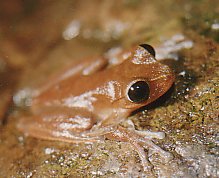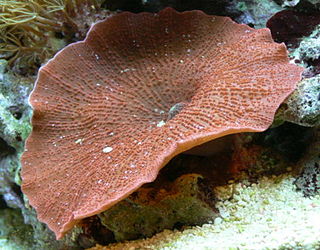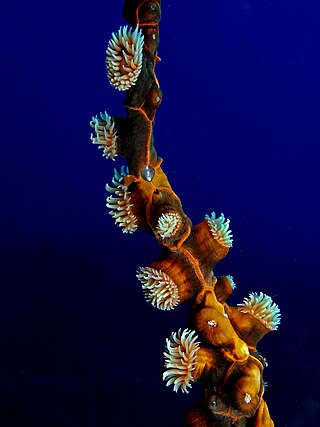
The Ninth Menzies ministry was the 39th ministry of the Government of Australia. It was led by the country's 12th Prime Minister, (Sir) Robert Menzies. The Ninth Menzies ministry succeeded the Eighth Menzies ministry, which dissolved on 22 December 1961 following the federal election that took place in early December. The ministry was replaced by the Tenth Menzies ministry on 18 December 1963 following the 1963 federal election.

Nyctimystes is a genus of tree frogs in the subfamily Pelodryadinae of the family Hylidae. They are principally Papuan species, but also inhabit islands in the Moluccas. All species in this genus have one distinct feature that separates them from other species in the family, the lower eyelid is marked with pattern of lines, veins, or dots. This feature presumably acts as camouflage when the frogs are at rest during the day.

The Astropectinidae are a family of sea stars in the order Paxillosida. Usually, these starfish live on the seabed and immerse themselves in soft sediment such as sand and mud.

Edwardsia is a genus of sea anemones, the type of the family Edwardsiidae. They have eight mesenteries and live in tubes in the sand. The name, in Neo-Latin, commemorates the French zoologist Henri Milne-Edwards.

Corallimorpharia is an order of marine cnidarians closely related to stony or reef building corals (Scleractinia). They occur in both temperate and tropical climates, although they are mostly tropical. Temperate forms tend to be very robust, with wide and long columns, whereas tropical forms tend to have very short columns with a wide oral disc and very short tentacles. The tentacles are usually arranged in rows radiating from the mouth. Many species occur together in large groups, although there are recorded instances of individuals. In many respects, they resemble the stony corals, except for the absence of a stony skeleton. Morphological and molecular evidence suggests that they are very closely related to stony corals.
Events in the year 1815 in Norway.

Amphianthus is a genus of sea anemones. It is the only genus in the monotypic family Amphianthidae.

Golfingiidae is a family of peanut worms.
Simrothiella is a genus of solenogasters, shell-less, worm-like, marine mollusks.

Papurana is a genus of frogs in the family Ranidae, "true frogs". They are known from Southeast Asia, New Guinea, and northern Australia. Papurana daemeli is the only ranid frog found in Australia.

Nephtheidae is a family of soft corals in the phylum Cnidaria. Members of this family are known as carnation corals, tree corals or colt soft corals. They are very attractive and show a wide range of rich and pastel colours including reds, pinks, yellows and purples. They are popular with reef aquarium hobbyists.

Gersemia is a genus of soft corals in the family Nephtheidae. Species in this genus are found in cold temperate and polar seas at depths ranging from 20 metres (66 ft) to over 2,000 metres (6,600 ft). The type species is Gersemia loricata.
Onchnesoma is one of the two genera that constitute the family Phascolionidae of Phylum Sipuncula, described by Koren and Danielssen established in 1873 as the type species to Onchnesoma steenstrupii.
Sympodium is a genus of soft corals in the family Xeniidae.
Liberal government may refer to:
Anthosactis is a genus of cnidarians belonging to the family Actinostolidae.
Scleronephthya is a genus of corals belonging to the family Nephtheidae.
Actinopsis is a monotypic genus of cnidarians belonging to the family Actiniidae. The only species is Actinopsis flava.

Priapulus is a genus of worms belonging to the family Priapulidae.










